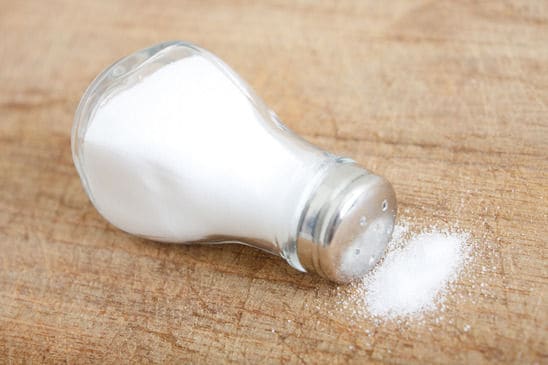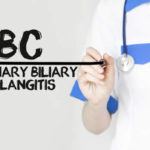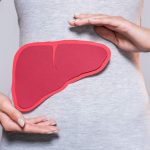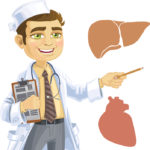
Previous
Psychological Tool to Reverse Fatty Liver Disease

Next
The Liver Disease Guide for Microwaving With Plastic
Important Facts About Salt and Cirrhosis
Upon being diagnosed with cirrhosis, physicians typically advise their patients to completely avoid, or significantly restrict, sodium intake. Learn why eliminating foods with salt from your diet is absolutely necessary if you’re living with cirrhosis – and find out some helpful hints on how to minimize salt intake.
When liver disease progresses it can lead to cirrhosis, the permanent hardening, shrinking, scarring and reduced functioning of the liver. Upon being diagnosed with cirrhosis, physicians typically advise their patients to completely avoid, or significantly restrict, sodium intake. With all of the lifestyle changes demanded of a person with advancing liver disease, avoiding sodium can seem like yet another restriction on your culinary freedom. However, passing on foods with salt is more than just a casual recommendation – the pathology of cirrhosis makes it a necessity.
Osmosis
Consuming salt fosters water retention. When in the blood supply, salt draws water out of the surrounding cells into the blood via osmosis. Remembering back to high school chemistry, osmosis is the tendency of concentrations across semi-permeable barriers to equalize. This is easily illustrated when salted water flows from an area of low salt concentration to an area of high salt concentration until both are of the same concentration. Because the body’s cells work best when a constant state is maintained, we are hardwired to keep mineral concentrations (such as salt) balanced. Therefore, the more salt in a person’s diet, the more fluid the body retains in an effort to dilute the salt.
Related Cirrhosis Pathology
When liver function is reduced, several biological events further caution against eating salt. The following physiological processes render a person with cirrhosis much more vulnerable to salt ingestion:
· Blood Pressure – As cirrhosis progressively scars the liver, its ability to effectively filter blood is reduced. This results in a reduced volume of blood, which lowers blood pressure. When blood pressure is low, signals are sent to the kidneys causing a release of chemicals for retaining salt and fluids.
· Albumin – The liver produces the protein albumin, which is responsible for holding fluid inside the blood vessels. Scarring of the liver causes blood albumin levels to fall, resulting in fluids seeping out of the leg and abdomen tissues.
· Portal Hypertension – When liver scarring causes a backup of blood, portal hypertension develops, elevating pressure in the vasculature coursing through the liver. Following the principles of osmosis, some of the fluid inside the highly pressurized portal vein leaks out to prevent the blood vessel from bursting.
The fluid retention typical of cirrhosis is typically found in two locations:
1. Edema – Due to gravity’s pressure, excess fluid accumulates in the tissue beneath the skin of the ankles and legs. Called edema, this swelling is typically worse at the end of the day, after a person has been on his or her feet all day long.
2. Ascites – As more salt and water are retained and liver function decreases, fluid accumulates in the abdomen. Increased abdominal fluid causes the kidneys to retain even more water, because they think the body is dehydrated. Known as ascites, swelling of the abdomen is a telltale sign of cirrhosis.
Why Ascites Is Unwanted
Aside from expanding girth around the midsection, ascites can cause the following medical complications:
· Abdominal Pain, Discomfort and Difficulty Breathing – When too much fluid accumulates in the abdominal cavity, the ability to eat, ambulate and perform activities of daily living can be severely limited.
· Infection – Known as spontaneous bacterial peritonitis, ascites can cause infection marked by abdominal pain, tenderness, fever or nausea. Without prompt medical intervention, spontaneous bacterial peritonitis can cause kidney failure, severe blood infection and mental confusion.
· Hernia – Elevated intra-abdominal pressure from ascites can lead to the development of umbilical and inguinal hernias. Typically manifesting with abdominal discomfort, pain or an abdominal bulge, a surgical repair may be necessary.
· Hepatic Hydrothorax – Ascites can cause fluid to permeate the chest. Called hepatic hydrothorax, abdominal fluid fills the lung cavities causing severe breathing difficulties. Furthermore, a buildup of fluid in the lungs can lead to heart failure.
How to Minimize Salt Intake
Since fluid accumulation associated with cirrhosis can be severe, diet is the first and most important intervention. Limiting dietary sodium helps prevent retaining extra fluid. Physicians typically advise limiting salt intake to 4-5 grams per day (2,000 mg of sodium) or less. Since it can be difficult to determine the salt content of various foods, it is generally recommended that someone with ascites see a nutritionist for advice about various foods to avoid.
For those who add table salt to food, a salt substitute may be ideal. However, choose one without potassium because blood potassium levels can increase with certain medications used to treat ascites. It is important to discuss with your doctor or dietician the salt substitute you are planning to use.
If you don’t already, start reading food labels to decipher their sodium content. Limit packaged, processed and restaurant foods, which are typically high in sodium. Cook with less sodium by choosing fresh or frozen foods, rinse canned vegetables and avoid these high sodium flavorings: soy sauce, steak sauce, onion salt, garlic salt, mustard and ketchup. Some hidden forms of salt to avoid include monosodium glutamate, sodium citrate, sodium alginate, sodium hydroxide and sodium phosphate.
By making a conscious effort to minimize the salt in your diet, you are taking huge steps to reduce the toll fluid retention takes on your body. People who have cirrhosis will feel much better when fluid buildup in their abdomen and legs abate. For people with advanced liver disease, skipping salt is as important as medications prescribed by your physician. With patience, experimentation and a sense of adventure, you can break free of sodium’s culinary limits by discovering the abundance of tasty, salt-free meals. So resist the increasing health problems caused by cirrhosis by squeezing some fresh lemon over your broccoli and tossing the salt shaker in the trash.
Cardenas, Andres, Arroyo, V., Mechanisms of water and sodium retention in cirrhosis and the pathogenesis of ascites, Clinical Endocrinology and Metabolism, Vol.17, 2003.
www.aafp.org, Preventive Strategies in Chronic Liver Disease, Thomas R. Riley III, MD, MS, Ahsan M. Bhatti, MD, American Academy of Family Physicians, 2007.
www.cvphysiology.com, Tissue Edema and General Principles of Transcapillary Fluid Exchange, Richard E. Klabunde, 2007.
www.gi.org, Ascites: A Common Problem in People with Cirrhosis, Raj Vuppalanchi, MD, Naga Chalasani, MD, American College of Gastroenterology, 2007.
www.gicare.com, Cirrhosis, Jackson Siegelbaum Gastroenterology, 2007.
www.gut.bmj.com, Sodium in Preascitic Cirrhosis: Please Pass the Salt, J. Claria, J. Rodes, Gut, December 2001.
www.health.yahoo.com, Eating a Low-Sodium Diet When you Have Cirrhosis, Shannon Erstad, MBA/MPH, Healthwise, Inc., 2007.
www.hepatitis.va.gov, Eating Tips for People with Cirrhosis, United States Department of Veteran Affairs, 2007.
www.medicinenet.com, Primary Biliary Cirrhosis, MedicineNet Inc., 2007.










